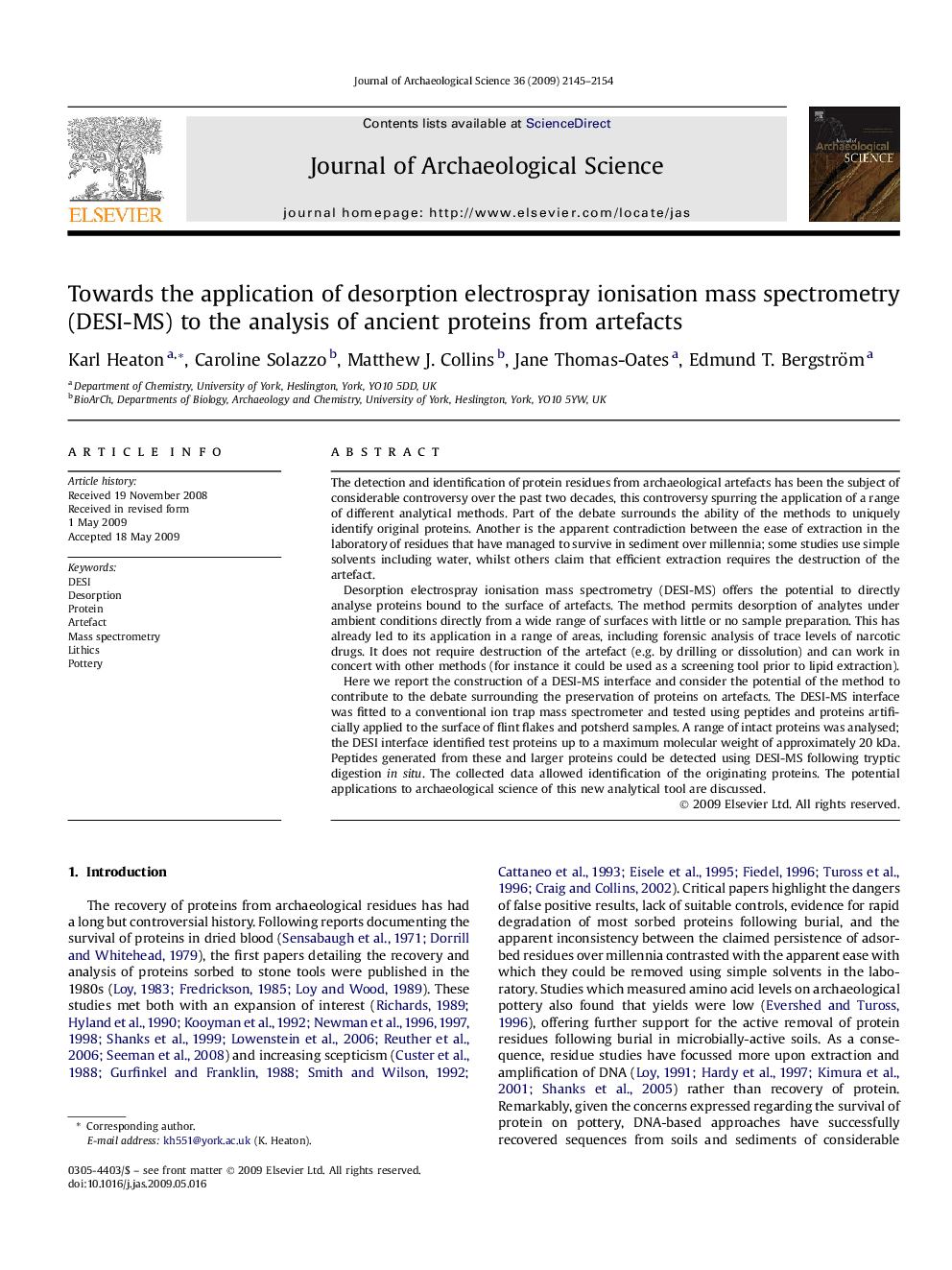| کد مقاله | کد نشریه | سال انتشار | مقاله انگلیسی | نسخه تمام متن |
|---|---|---|---|---|
| 1036386 | 943884 | 2009 | 10 صفحه PDF | دانلود رایگان |

The detection and identification of protein residues from archaeological artefacts has been the subject of considerable controversy over the past two decades, this controversy spurring the application of a range of different analytical methods. Part of the debate surrounds the ability of the methods to uniquely identify original proteins. Another is the apparent contradiction between the ease of extraction in the laboratory of residues that have managed to survive in sediment over millennia; some studies use simple solvents including water, whilst others claim that efficient extraction requires the destruction of the artefact.Desorption electrospray ionisation mass spectrometry (DESI-MS) offers the potential to directly analyse proteins bound to the surface of artefacts. The method permits desorption of analytes under ambient conditions directly from a wide range of surfaces with little or no sample preparation. This has already led to its application in a range of areas, including forensic analysis of trace levels of narcotic drugs. It does not require destruction of the artefact (e.g. by drilling or dissolution) and can work in concert with other methods (for instance it could be used as a screening tool prior to lipid extraction).Here we report the construction of a DESI-MS interface and consider the potential of the method to contribute to the debate surrounding the preservation of proteins on artefacts. The DESI-MS interface was fitted to a conventional ion trap mass spectrometer and tested using peptides and proteins artificially applied to the surface of flint flakes and potsherd samples. A range of intact proteins was analysed; the DESI interface identified test proteins up to a maximum molecular weight of approximately 20 kDa. Peptides generated from these and larger proteins could be detected using DESI-MS following tryptic digestion in situ. The collected data allowed identification of the originating proteins. The potential applications to archaeological science of this new analytical tool are discussed.
Journal: Journal of Archaeological Science - Volume 36, Issue 10, October 2009, Pages 2145–2154